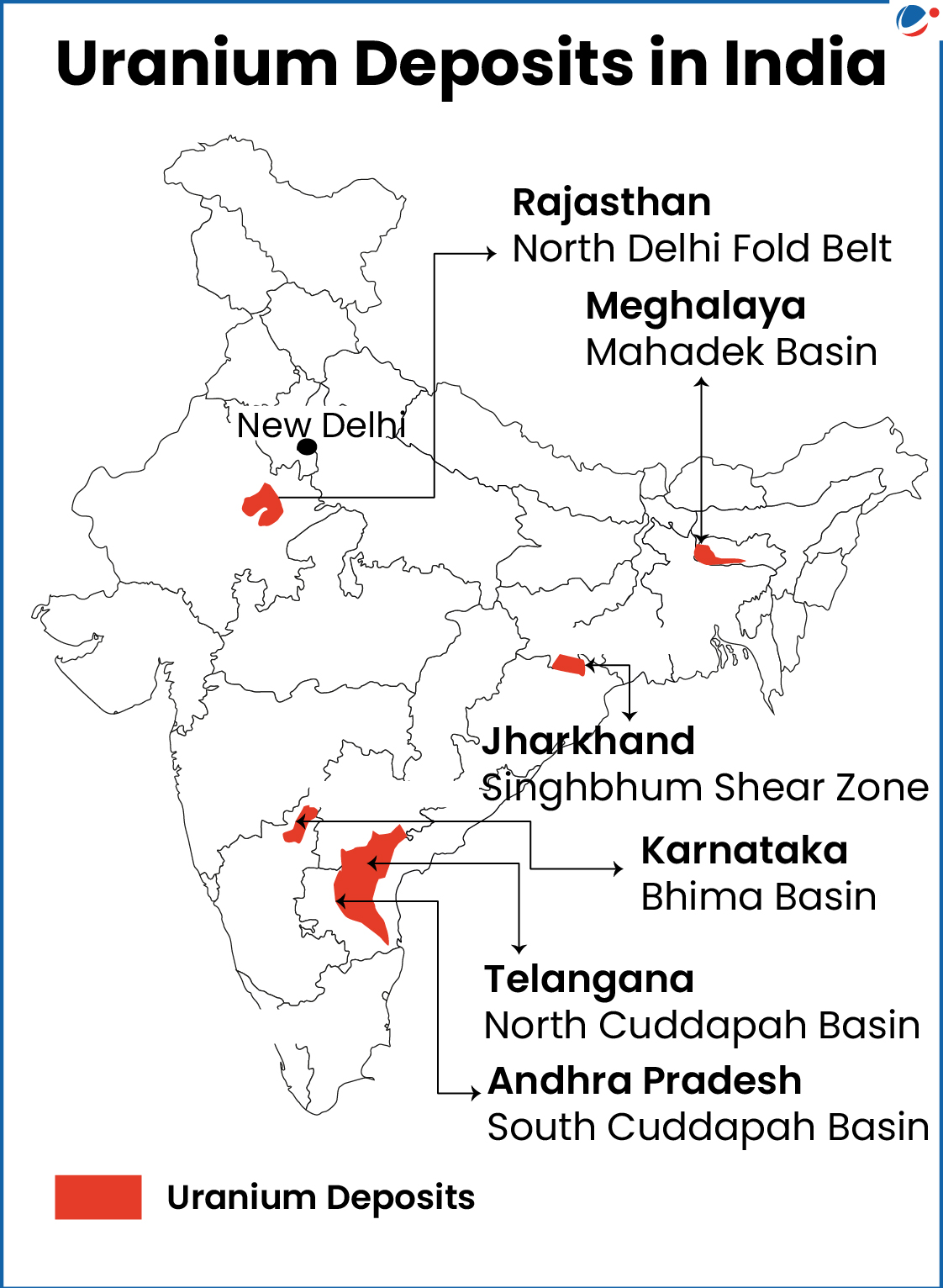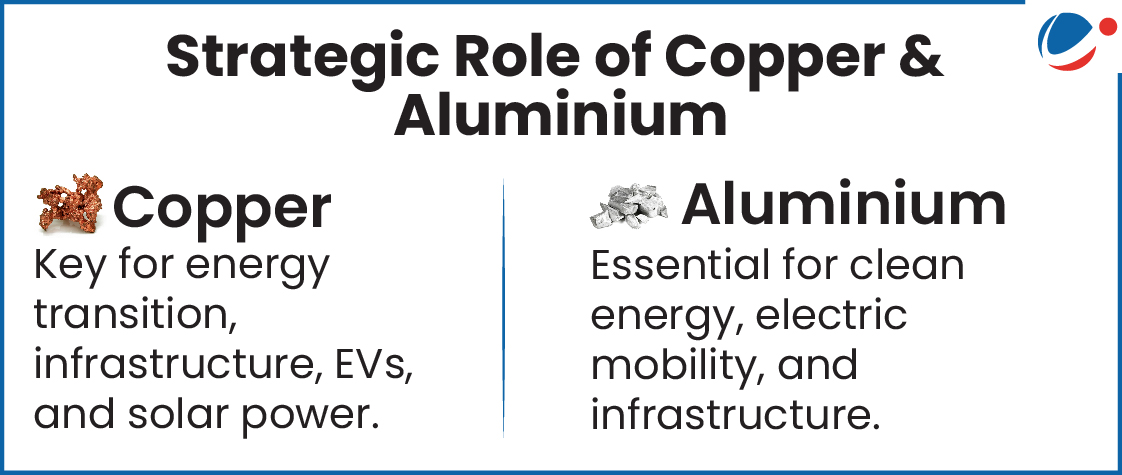CROPIC
This initiative is part of digital innovations in agriculture for fostering financial resilience.
About CROPIC (Collection of Real Time Observations & Photo of Crops) initiative
- It is a mobile app launched by The Ministry of Agriculture under Pradhan Mantri Fasal Bima Yojana (PMFBY).
- To take geotagged pictures of crops four-five times during their cycle.
- It will use an AI-based cloud platform for photo analysis and information extraction, and a web-based dashboard for visualisation.
- Funding: Through Fund for Innovation and Technology (FIAT) under PMFBY.
- Tags :
- CROPIC
Articles Sources
Offshore Areas Atomic Minerals Operating Right Rules, 2025 Notified

These rules are notified in accordance with the provision of the Offshore Areas Mineral (Development and Regulation) Act, 2002.
About the Rules
- Objective - To regulate the exploration and mining of atomic minerals like uranium and thorium in offshore areas
- Rules will only apply if concentration of atomic minerals above a certain minimum level.
- Under the rules entities nominated by Govt can be granted exploration licences or production leases.
- In case of foreign entities, undertaking exploration operations, prior approval shall be obtained from the Government authorities.
Key Atomic Minerals in India
- Uranium
- Key Reserves: Jharkhand, Andhra Pradesh, Meghalaya, Rajasthan etc.
- Jaduguda (Jharkhand) is the first mine in the country to produce uranium ore on a commercial scale.
- Other Important Mines: Lambapur-Peddagattu (AP), Bagjata mine (Jharkhand), etc.
- Most of uranium deposits in India small and of far lower grade compared to those in the leading uranium-producing countries in the world.
- Thorium
- India has a limited resource of uranium but a large resource of thorium.
- Monazite contains about 8 – 10% thorium.
- The beach sands of Kerala and Orissa have rich reserves of monazite.
- Tags :
- Offshore Areas Mineral
Global Capability Centre (GCC)
The Finance Minister urged industry & government to work together to boost the setup of GCC and attract more Fortune 500 companies which are yet to establish their presence in India. (On an average 1 new GCC per week was set up in the year 2024)
About GCCs
- It is also known as global in-house centres or captives (GICs).
- GCCs are offshore centres established by global firms to provide various services to their parent organisations.
- E.g. IT services, Research and Development (R&D), customer support
- They operate within the internal organization structure of the global corporate organization.
- Major Drivers in India: Cost efficiency, Digital and Policy Readiness (e.g Smart Cities, Digital India), Talent availability (Highly skilled & cost-effective workforce with english proficiency), Large Consumer Market etc.

Challenges in development of GCCs in India: Limited availability of skilled workforce (in Tier-II and III cities), Infrastructure gaps (physical and digital connectivity), Complex regulatory structures, cybersecurity threats.
Strategic Interventions Required
- Embrace Next-Gen Technologies: e.g. AI, automation, cloud computing etc.
- Navigate Geopolitical Complexities: Adopt agile governance models to respond swiftly to complex geopolitical scenarios and resulting regulatory uncertainty.
- Redefine Workforce Strategies: Upskilling of talent, adoption of new-age skills and hybrid work models.
- Sustainability: Aligning GCCs with environmental, social, and governance (ESG) goals.
- Tags :
- Global Capability Centre (GCC)
DoT Releases Draft National Telecom Policy (NTP)-2025
NTP-2025 seeks to build on progress made under National Digital Communications Policy 2018.
- It addresses emerging challenges by next-generation technologies such as 5G/6G, Artificial Intelligence (AI), Internet of Things (IoT), Quantum Communications, Satellite Network, and Blockchain.
- It positions India to become “Nation of Choice” for Telecom Technology, under the vision of “Bharat – A Telecom Product Nation”.
About NTP-2025
- Vision: transform India into a digitally empowered economy by ensuring universal and meaningful connectivity, building secure and sustainable telecommunications networks.
- Mission: It outlines six strategic missions:
- Universal and Meaningful Connectivity: Expand telecom networks, improve service quality, and integrate technologies to ensure inclusive digital participation.
- Innovation: Promote research, startups and strengthen industry -academia -government.
- Domestic Manufacturing: Boost economic growth through skilled workforce, investments, and design-led manufacturing.
- Secure and Trusted Telecom Network: Enhance security, promote cyber hygiene, and build a resilient, trustworthy telecom ecosystem.
- Ease of Living and Ease of Doing Business: Simplify telecom access, foster digital inclusion, and create a business-friendly environment.
- Sustainable Telecom: Promote green technologies, circular economy, and renewable energy to reduce telecom’s environmental impact.

- Tags :
- Draft National Telecom Policy
Aluminium and Copper
Central Government recently unveiled Aluminium and Copper Vision Documents.
About Vision Document
- Provides a long-term strategy to meet growing domestic demand while ensuring raw material security.
- Copper Vision Document: Anticipates a six fold increase in demand by 2047 and outlines plans to add 5 Million Tonnes Per Annum (MTPA) of smelting and refining capacity by 2030.
- Aluminium Vision Document: Outlines a strategic roadmap to scale up aluminium production six fold by 2047 and aims to expand bauxite production capacity to 150 MTPA.
Distribution of Copper and Aluminium
Aluminium/Bauxite

- India
- Reserve: Odisha (41%) followed by Chhattisgarh and Andhra Pradesh for bauxite.
- Odisha is leading producing State (73%).
- World
- China is the leading producer of aluminium (58%) which is followed by Australia,Brazil and India.
Copper
- India :
- Reserves: Rajasthan (52.25%) followed by Madhya Pradesh and Jharkhand.
- Production: Madhya Pradesh was the leading producer (57% of the production during 2022-23), followed by Rajasthan (43%).
- World
- Chile has the largest share (19% of world reserves) followed by Peru and Australia (10%).
- Tags :
- Aluminium and Copper Vision Documents



